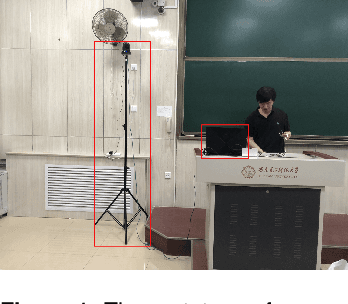Pengcheng An
PeerGPT: Probing the Roles of LLM-based Peer Agents as Team Moderators and Participants in Children's Collaborative Learning
Mar 21, 2024Abstract:In children's collaborative learning, effective peer conversations can significantly enhance the quality of children's collaborative interactions. The integration of Large Language Model (LLM) agents into this setting explores their novel role as peers, assessing impacts as team moderators and participants. We invited two groups of participants to engage in a collaborative learning workshop, where they discussed and proposed conceptual solutions to a design problem. The peer conversation transcripts were analyzed using thematic analysis. We discovered that peer agents, while managing discussions effectively as team moderators, sometimes have their instructions disregarded. As participants, they foster children's creative thinking but may not consistently provide timely feedback. These findings highlight potential design improvements and considerations for peer agents in both roles.
EmoWear: Exploring Emotional Teasers for Voice Message Interaction on Smartwatches
Feb 11, 2024Abstract:Voice messages, by nature, prevent users from gauging the emotional tone without fully diving into the audio content. This hinders the shared emotional experience at the pre-retrieval stage. Research scarcely explored "Emotional Teasers"-pre-retrieval cues offering a glimpse into an awaiting message's emotional tone without disclosing its content. We introduce EmoWear, a smartwatch voice messaging system enabling users to apply 30 animation teasers on message bubbles to reflect emotions. EmoWear eases senders' choice by prioritizing emotions based on semantic and acoustic processing. EmoWear was evaluated in comparison with a mirroring system using color-coded message bubbles as emotional cues (N=24). Results showed EmoWear significantly enhanced emotional communication experience in both receiving and sending messages. The animated teasers were considered intuitive and valued for diverse expressions. Desirable interaction qualities and practical implications are distilled for future design. We thereby contribute both a novel system and empirical knowledge concerning emotional teasers for voice messaging.
"When He Feels Cold, He Goes to the Seahorse"-Blending Generative AI into Multimaterial Storymaking for Family Expressive Arts Therapy
Feb 09, 2024Abstract:Storymaking, as an integrative form of expressive arts therapy, is an effective means to foster family communication. Yet, the integration of generative AI as expressive materials in therapeutic storymaking remains underexplored. And there is a lack of HCI implications on how to support families and therapists in this context. Addressing this, our study involved five weeks of storymaking sessions with seven families guided by a professional therapist. In these sessions, the families used both traditional art-making materials and image-based generative AI to create and evolve their family stories. Via the rich empirical data and commentaries from four expert therapists, we contextualize how families creatively melded AI and traditional expressive materials to externalize their ideas and feelings. Through the lens of Expressive Therapies Continuum (ETC), we characterize the therapeutic implications of AI as expressive materials. Desirable interaction qualities to support children, parents, and therapists are distilled for future HCI research.
NaMemo: Enhancing Lecturers' Interpersonal Competence of Remembering Students' Names
Nov 21, 2019

Abstract:Addressing students by their names helps a teacher to start building rapport with students and thus facilitate their classroom participation. However, this basic yet effective skill has become rather challenging for university lecturers (especially in Asian universities), who have to handle large-sized (sometimes exceeding 100) groups in their daily teaching. To enhance lecturers' competence in delivering interpersonal interaction, we develop NaMemo, a real-time name-indicating system based on a dedicated computer vision algorithm. This paper presents its design and feasibility study, which showed a plausible acceptance level from the participating teachers and students. We also reveal students' concerns on the abuse or misuse of this system: e.g., for checking attendance. Taken together, we discuss the opportunities and risks in design, and elaborate on the plan of a follow-up, in-depth implementation to further evaluate NaMemo's impacts on learning and teaching, as well as to probe design implications including privacy considerations.
 Add to Chrome
Add to Chrome Add to Firefox
Add to Firefox Add to Edge
Add to Edge